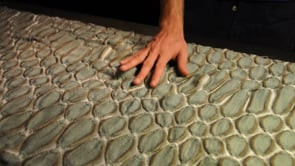
Cad Cam Knitting

A research collaboration between CITA and Shenkar College of Engineering and Design .
Listener explores the idea of a textile membrane that has an inherent capacity to sense and react to its surrounding. Collapsing the idea of the controlled and the controlling, Listener is the making of a material that has its own, autonomous, relationship to its environment. The textile is treated as a composite material that through its inherent conductivity allows for the passing of computational signals, but also through its exceptional structural strength, and through its treatment, gains new properties.
Our interest is to look at the material cultures that the embedding of computational events address. As architecture is introduced to ever smarter materials that are conductive, can phase shift or otherwise include computationally steered events, we are entering a radical rethinking of our material culture. Advancements in material science and digital design and fabrication are fundamentally changing the way we conceive and design the materials by which architecture is made.

Listener is developed through the making of bespoke interfaces between architectural CAD tools and CNC knitting machines. The surface is parametrically steered creating a high differentiated surface in which the cell size continually changes. Using Grasshopper and VB the design space is directly outputting machine code for the CNC knitter.
Listener is a bespoke composite combining 4 different fiber types to specify the performance of the surface. Each fibre has its own structural role.
Finally Listener is a robotic membrane. As an actuated surface Listener senses the space around it and responds to it through a shifting of its breathing pulse. The material is active both as structural membrane as well as sensing strata. Composed with integrated conductive fibres knitted directly into the material and thereby becoming part of the material specification, Listener embeds touch sensors that allow the material to sense its own conductivity. In a very straight forward sense this is done by integrating soft switches [6] in to the material construction. These open pins ‘listen’ to the closing of circuitry mapping conductivity to the instigation of action.
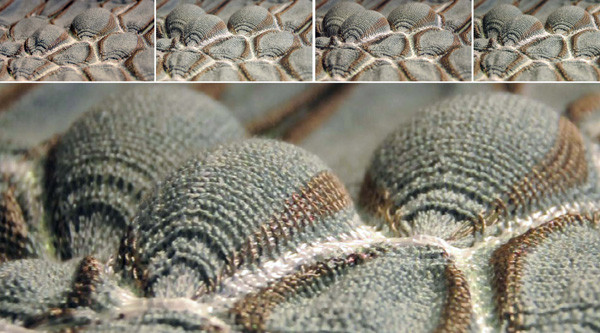
The material thereby becomes sensitive as it registers changes in the conductive flow through the material. As the material moves, or as users touch and interact with the material, they actuate the sensor, which in turn informs a microprocessor that ultimately switches on and off an air blowing device. This self-sensing, the continual tracking of conductive flow through the material is the basis for the programming of Listener The movements of the surface are registered and in turn passed on to instigate new movements. The circularity of this feedback loop creates a continual process of self-production, of self-sensing and self-response.

Our central interest in textiles in an architectural context lies with their structural potential as a particular class of composite materials. Our research concentrates on the design of highly specified membranes that incorporate computational as well as structural performances. Our work explores the collapse of sensing, actuation and structure into one integrated membrane.
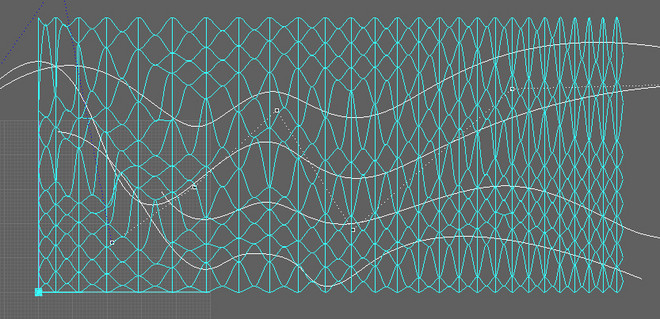
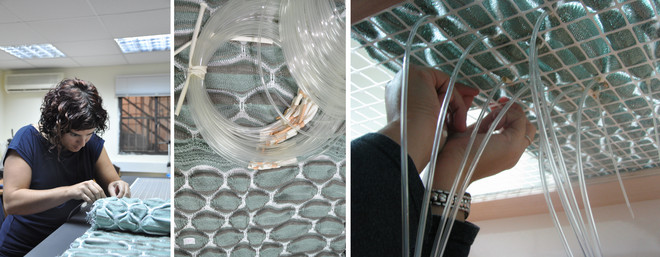
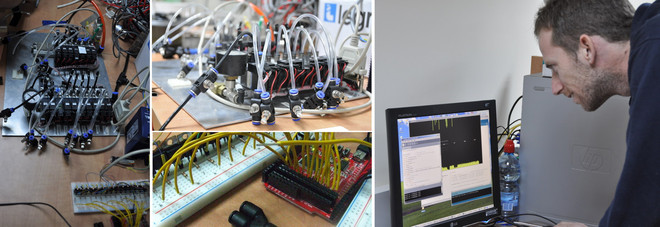
Publications
Ramsgard Thomsen, M., Karmon, A.
"Computational materials: embedding computation into the everyday"
Conference presentation “Digital Art and Culture: DAC09, UC Irvine, Los Angeles, Dec 2009
Palz, N. Ramsgaard Thomsen, M.
"Computational Material: Rapid Prototyping of Knitted Structures"
Proceedings of "Architecture and Stages in the Experience City", Aalborg University. 2009
Ramsgard Thomsen, M. , Tamke, M.
"Narratives of Making: thinking practice led research in architecture"
Communicating by Design, International Conference on Research and Practice in Architecture and Design, Bruxelles, April 2009
Ramsgard Thomsen, M. , Hicks, T.
"To build a Knitted Wall"
Proceedings, Ambience, smart textiles conference, Gøteborg, April 2008













